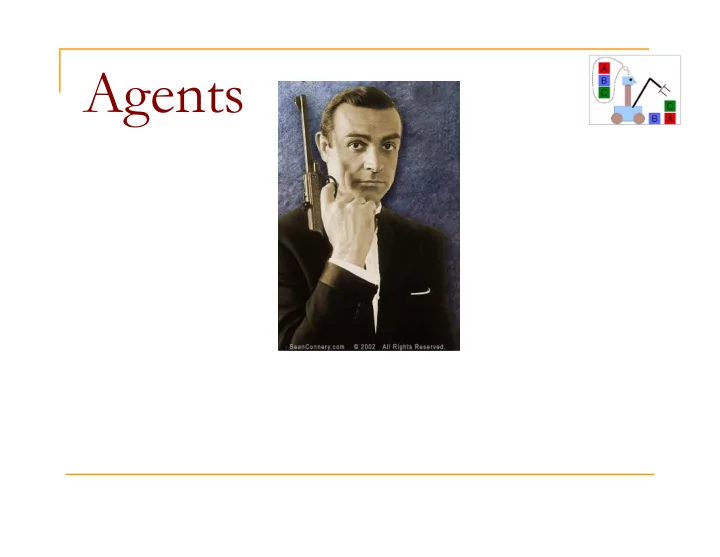

Agents
What’s an agent? n Russell and Norvig: “An agent is anything that can be viewed as perceiving its environment through sensors and acting on that environment through actuators .” (p. 32) n Examples: q Automatic driver q Internet shopper q Backgammon player q Chemical plant controller q Spam detector
The agent and the environment An agent: n Works in a particular environment n Has goals n Perceives the environment n Performs actions to achieve its goals.
Example: the automated driver n Performance measures? n Environment: q Roads, other traffic, pedestrians, weather n Actuators: q Steering, accelerator, brake, turn signal, horn n Sensors: q Cameras, LIDAR, RADAR, GPS, engine and motion sensors, microphone
Example: the automated driver n Possible performance measures: q Safe, fast, legal, comfortable trip. n Environment: q Roads, other traffic, pedestrians, weather n Actuators: q Steering, accelerator, brake, turn signal, horn n Sensors: q Cameras, LIDAR, RADAR, GPS, engine and motion sensors, microphone
Agent structure n Agent: architecture + program n The agent program : maps percepts to actions n The agent program receives as input the current percept and returns an action for the agent’s actuators.
Goal-based agents n Our automated-driver agent needs to get somewhere: it has a goal . Chooses actions to achieve goal. n Search and planning are subfields of AI devoted to finding a sequence of actions that achieve the agent’s goals.
Utility-based agents n Utility function maps a (sequence of) state(s) onto a real number. n Certain goals can be reached in different ways. q Some are better, have a higher utility. n Improves on goals: q Selecting between conflicting goals q Select appropriately between several goals that have varying probability of success.
Recommend
More recommend